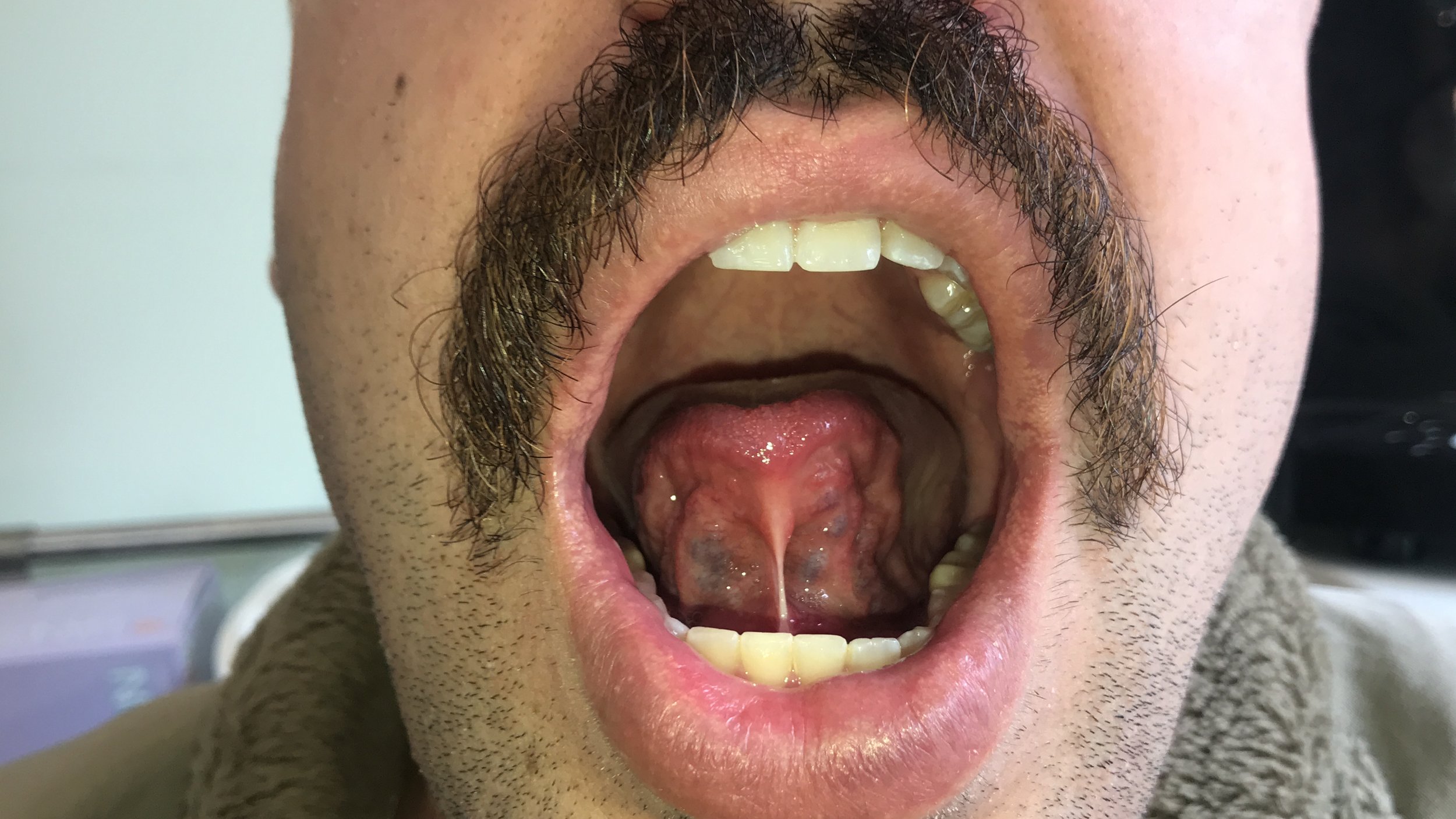
What in the world is a tongue-tie?
ankyloglossia
A tongue-tie, medically known as ankyloglossia, is a condition where the thin piece of tissue that connects the bottom of your tongue to the floor of your mouth (called the lingual frenulum) is shorter, thicker, or tighter than usual. This can restrict the normal movements of the tongue, making it harder to suction the tongue to the palate at night to keep it off the airway. When this fails, we choke in our sleep and get daytime fatigue.
Imagine if you had a rubber band that's a bit too tight, it might limit how far you can stretch it. Similarly, in tongue-ties, the tightness of this tissue can restrict the movement of the tongue. This can sometimes cause issues with feeding in babies or difficulties with speech, sleep, occlusion with teeth, crooked teeth, and swallowing in adults. A non-functional tongue tie may impact our sleep quality, oral biome, breathing, jaw/neck tension, and anything connected to the ‘deep front line’ (a piece of fascia/connective tissue that goes from your tongue to your toe).
If your tongue cannot rest in its natural position (roof of the mouth) then it becomes harder to keep the mouth sealed in order to be a habitual nose breather. Mouth breathing instead becomes common, making your mouth more acidic and dry as well as changing the oral biome which increases your risk for gum disease and tooth decay.
Treatment for tongue-tie can involve a simple procedure called a frenuloplasty, where the tight tissue is released with a CO2 laser to improve tongue movement.
Several Oral Myofunctional Therapy (OMT) sessions are required prior to a functional tongue tie release for a few reasons. 1) During the procedure, you must be able to hold certain tongue positions for a specific amount of time. The exercises in therapy help move things we don’t want to touch during surgery (arteries, veins, nerves). These things increase muscle tone and further back and bring forward the things we do want to laser (fascia, mucosa, muscle). 2) The exercises promote wound healing, increased flexibility, less bleeding, decreased risk of re-attachment of the frenum with the need for a 2nd release surgery, and overall increase the success rate of the release.
For a functional frenuloplasty, Dr. T uses a CO2 laser (which limits bleeding and pain and promotes healing) to release the tie/frenum under your tongue. You’re appropriately numb with local anesthetic. Once released, Dr. T applies biocompatible and dissolvable sutures in combination with a particular type of glue. This allows the tongue to heal faster and helps your frenum grow back appropriately.
